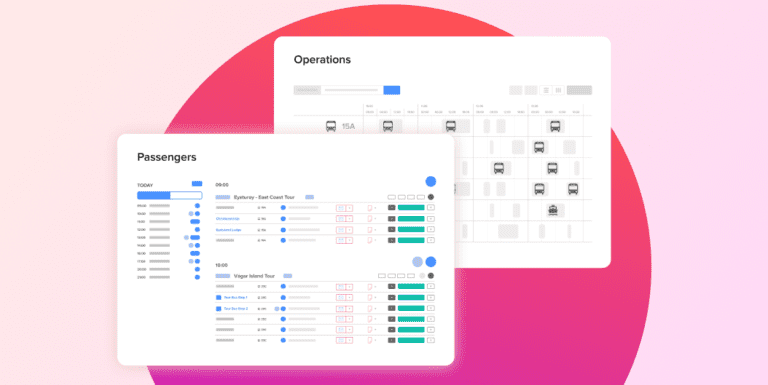Effective marketing strategies for Tour Operators of the future
As we all know, the tourism industry has been hit the hardest by COVID-19. Unlike other industries, it has in parts, completely ground to a halt. With no way of knowing exactly when these times will be behind us, we have only one option and that is to look ahead to a brighter future and be ready for it.
We understand that every Tour operator is different and in different positions. Whilst some have been able to pivot to domestic travellers, when restrictions permit, for others, it has been a case of hibernation. One thing that all of us in the Tours & Activities sector can do, is join forces to share the knowledge, tips & tricks to help market our businesses for the future.
Where should Operators focus their marketing efforts?
It’s well known that paid advertising has somewhat clouded the concept of marketing, and moreover digital marketing. The reality is, paid marketing is one segment of the whole strategy (phew!). Right now, the idea of anything paid, is not favourable for most Tour Operators. For that reason, we’ve compiled some alternate methods to ramp up your marketing initiatives without any payments to Facebook or Google. For the record, we do completely recommend paid advertising or PPC but in these times, it is not the ‘be all or end all’.
- Let’s Blog!
By definition marketing is the action of promoting your business or service with view to increasing awareness and distribution. Now, aside from recommendations, referrals, reputation and returning customers, there are few ways we can leverage different online and offline platforms to gain more exposure.
So, we’ve decided to round up the top 5 that you should be thinking about for the future.
In simple terms, writing and uploading a blog to your website can really help to boost your overall content value and optimise your keyword search engine ranking (SEO). Blogging is a core component of SEO and it sure does help potential customers find you or at least what they were looking for. Which, if you are regularly blogging could be you.
There are a few things to determine first, ensure that you have some organisation to the pieces you write about, remember that there has to be value to the content you are creating. Best practices for Tour Operator blogs often consist of local tips, notable events, top tour picks or sites to see, cultural information, FAQ’s etc. Once you have a couple of themes in place, it will feel a lot more natural to begin writing and you may just find yourself flowing through it. In addition to helping you rank higher, having an active blog can also help to store useful content and information for future guests and travellers. It is very often that prior to any given travel date, customers want to know about the details of a tour or information on what they should bring, having a ‘what to pack guide for the half day alpine tour’ may well delight existing customers and aid in generating new ones.
Finally, the best part of blogging is that it is truly multi purpose. In addition to the benefits we covered earlier, a blog article is a great resource to share on social media platforms such as Facebook, Twitter or LinkedIn (for those all important B2B relationships)
2. Number two, all important Reviews
According to research from the podium 93% of consumers say their purchases are influenced by online reviews. Data clearly shows that we trust in what others have to say about our products and therefore it is important to make sure we are collecting reviews. In addition to the reviews themselves, research shows that 89% of consumers read the businesses responses to reviews. So, make sure for each review you receive, try to reply to as many as possible.
An easy way to gather reviews is to send a follow up email and encourage customers to leave detailed reviews of their experiences on various different platforms. It is beneficial to make sure you have reviews across your rating sites, such as Tripadvisor, Facebook and Google+.
3. Review your historical data now
Now is the perfect time to delve deeper into your historical data in order to spot patterns, analyse metrics of notable relevance and identify any variables that appear to have effects. There are a couple of places where you can review marketing data to optimise your business for the future.
Google Analytics:
- Pinpoint slower loading pages.
- View which devices are used to visit your site by proportion. If the bulk number of visitors use a mobile device and your site is not optimised for mobile, you may want to consider improving this.
- Analyse the key demographics of visitors (geographical, time of day, day of the week etc).
- Review the key channels/ referrals that your visitors come from, this is paramount to assess which distribution channels are working and which ones may need more work or investment.
Smartlook (Heatmap software)
- Overview of user behaviour to your website
- View your visitor journey, page by page and see what your visitors do and when they come back
- Use funnels to find visitors that did not finish a step and then assess why that might be to increase your conversion rate
4. Run an audit on your website
If you’ve ever heard the saying “you can lead a horse to water but can’t make it drink” then you’ll know exactly what we are talking about here.
Ultimately, the very best marketing strategies, SEO efforts, paid advertising campaigns and product selection can’t make your website visitors book a tour. It is important that when visitors land on your site, they can navigate easily and find what they need to make a purchase.
A quick website audit can be a surefast way to check your bases and make sure everything is functioning correctly to optimise conversions. Remember to conduct your audit on the mobile and desktop version of your site. It’s best to imagine that you are a new visitor that does not know anything. Think about things like:
Are the booking buttons easy to find on a page?Or do you have to scroll all the way to the top or to the bottom to book?
Is it easy to navigate to and from pages? Bare in mind, visitors like to compare tours / products so it’s important to make sure that any anchors or breadcrumbs are functioning properly
Are your products categorised properly? Are tours accessible and easy to search for, customers can search for what they do not know is available
Is content easy to read and showcasing your USP’s to the fullest? This is something that you should look at both for products on your website and your products as they appear on OTA sites.
5. Get social
Whilst physical travel is virtually off limits for now, we are still dreaming of the day we can all travel again in the not so distant future.
For this reason, it’s important to maintain your social media activity and consider creative ways to showcase your experiences to future travellers. Utilise different platforms to keep content engaging and widen your reach.
Think about your audience and how these times are impacting them, we are reading more news online, watching videos, getting inspired. So, what interesting facts, photos, videos can you share? Maybe it’s just a case of up cycling content from the past and revitalising it with insightful captions or perhaps taking a short instagram video of interesting, local snapshots of your city, office, view currently.







